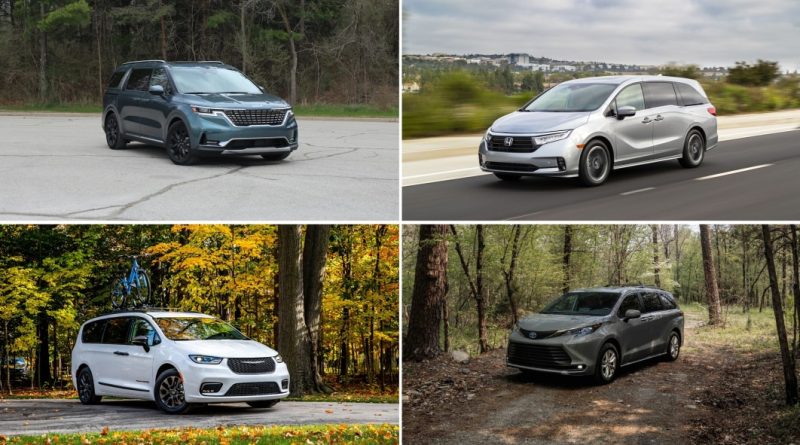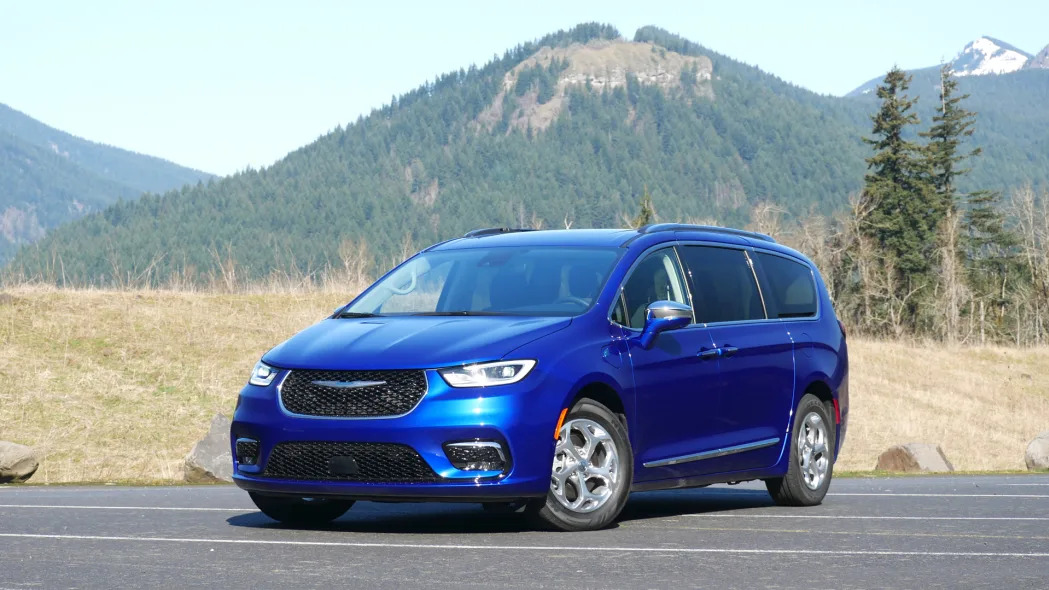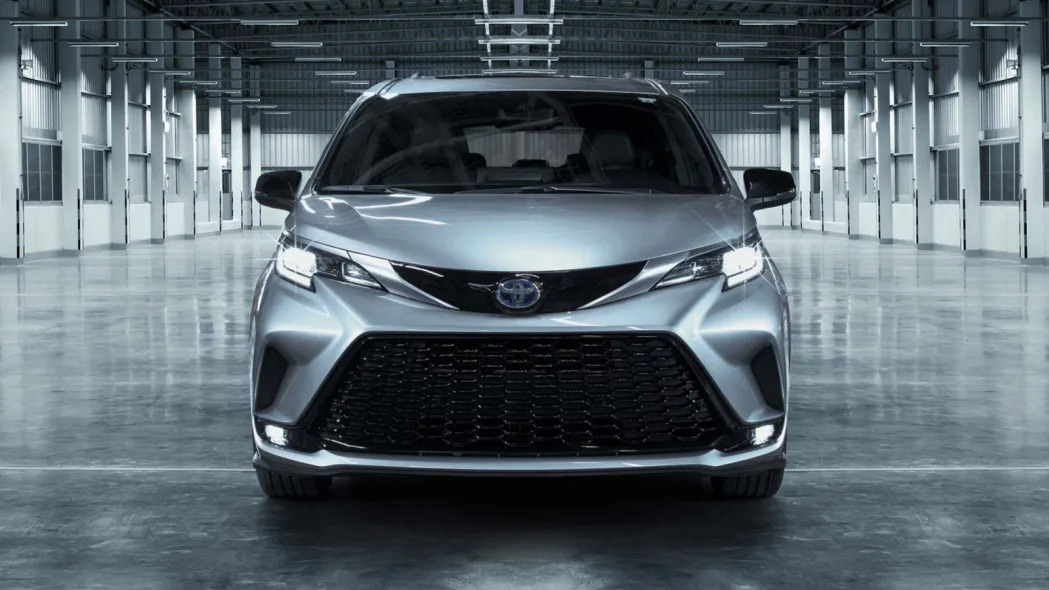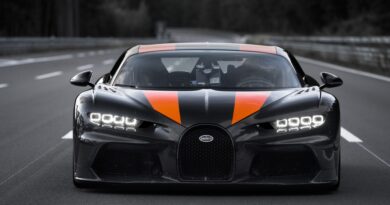The Best Minivans for 2024
Minivans may be best described as the cargo pants of automobiles. Beloved and bemoaned alike for their functionality-above-all-else packaging, a minivan is the best tool for most family-related jobs. If you’re reading this, we’re probably preaching to the choir, but even the converted may not be aware of the current state of the segment. Spoiler alert: It’s bleak. If you thought the Kia Carnival was going to prompt a resurgence of short noses and sliding doors, well, prepare to be disappointed.
It’s worth noting that there will be a new minivan contender in 2025 in the form of the all-electric Volkswagen ID. Buzz. We’re sure there are more than a few Americans ready to get groovy again with a proper van from VW, but until we get a chance to properly test that three-row electric van, we’re left with only a few options.
Normally, we’d just list our favorites in alphabetical order, but given the number of minivans currently on sale and the fact that there’s barely room in the market for good minivans, let alone mediocre ones, we’re simply listing all of them along with their respective pros and cons. Realistically, there are no true duds in this group, but depending on your priorities and what you’re willing to trade off (say, accepting a hybrid powertrain if fuel economy is of prime importance), you may be even more limited in your choices to decide the best minivan to buy in 2024. To get a feel for what we look for in a good new minivan, check out our comparison test between the Chrysler Pacifica and Toyota Sienna. While there, you’ll also see which of the contenders we believe is the best hybrid minivan.
Chrysler Pacifica (and Pacifica Hybrid)
Why it stands out: Unique plug-in hybrid; versatile Stow ‘n Go seats; great entertainment features; good looks.
What could be better: No cheaper base trim; top trims and Hybrid are really expensive; less-comfy second-row Stow ‘n Go seats.
Read our full Chrysler Pacifica Review
Chrysler has been building minivans since the notion was first conceived, and while ChryCo can’t technically be credited with inventing the concept, it was certainly responsible for endearing it to American car buyers. The Pacifica itself is now seven years old, which is advanced by vehicular aging standards, but it remains competitive thanks to a top-notch interior (provided you’re willing to pay for all the bells and whistles) and an available plug-in hybrid system that offers 32 miles of electric-only range. That’s not only a segment exclusive, but quite solid by conventional PHEV metrics.
The Pacifica’s interior is reasonably attractive and well-appointed. It’s not quite as pretty as the Sienna or Carnival inside, but it’s a solid effort. It also comes packed with the segment’s best tech. Chrysler’s Uconnect infotainment is excellent as always and integrates with the rear seats to provide Bluetooth connections and charging points. There’s also a full factory rear-seat entertainment option if Uconnect and some tablets can’t get the job done.
Its standard 3.6-liter V6 makes 287 horsepower and 262 pound-feet of torque; the PHEV makes a little less power (just 260 hp), but the instant torque from its electric motors make it feel much quicker, plus it can operate on battery power alone for short errands and commutes. Steering and handling are both reasonable, but be aware that the PHEV weighs nearly 600 pounds more than the standard V6; adjust your stopping distance accordingly. Plus, that hybrid is expensive. Expect to pay north of $50,000 just to get out the door unless incentives return in a big way.
The biggest knock against the Pacifica is that its predicted reliability remains hit-or-miss. In a crowd that includes Honda and Toyota, that’s something to consider. It’s also worth noting a significantly updated Pacifica is rumored for 2025.
Honda Odyssey
Why it stands out: ‘Magic’ middle row great for parents with small kids; plush ride; Honda reliability reputation.
What could be better: No cheaper base model; dreary to drive even for a minivan; no hybrid or AWD.
Read our full Honda Odyssey Review
We refer to the Odyssey as “the ultimate piece of parenting gear,” tying nicely into our cargo pants theme above. The Odyssey is probably the least objectively interesting model in this mix, but since when has that mattered? Its only true deficit is its middling fuel economy, which in Honda’s case isn’t offset by the availability of a hybrid powertrain. Sadly, the day of the Odyssey driving like an Accord are long gone; it’s the least dynamically engaging of the bunch but it’s still quiet and comfortable, as a road trip machine should be.
The big thing Honda has going for it is its “Magic Slide” second-row seats. We go into those in depth in this Odyssey Driveway Test, along with their excellent ability to accommodate infant car seats, but in short, it’s a brilliant idea and well suited to parents of young children (although the Carnival’s own unique eight-passenger configuration comes close). Older kids would probably appreciate the far-sliding captain’s chairs in the seven-passenger Carnival and Sienna that provide far more sprawl-out space (the Odyssey’s limited fore-aft adjustment also results in a smaller gap between the seat and pillar for third-row access). Should you be prioritizing cargo versatility, the best bet is unequivocally the non-hybrid Pacifica’s fold-away Stow ‘N Go seats.
Its interior tech is a bit on the ho-hum side, but it’s largely functional. We generally prefer the interfaces of the Carnival and Pacifica, plus the Sienna’s available widescreen system. Honda was the first to bring an in-cabin vacuum back to the segment, and that has since been copied by Toyota and Chrysler. What, Kia kids don’t leave crumbs?
Kia Carnival
Why it stands out: Stylish; great tech; multiple trick second-row seat options.
What could be better: No hybrid or all-wheel-drive option; comparatively small third row.
Read our full Kia Carnival Review
In the minivan world, not looking like a minivan is generally considered an improvement (see: pants that are not cargo). By that standard, the Kia Carnival is a supermodel. However, there are those among us here at Autoblog who think it tries a bit too hard. Beauty is in the eye of the beholder, of course, but there’s no denying the fact that Kia’s entry offers a rather unusual aesthetic for the sliding-row segment.
Like all minivans, a big differentiator is the second-row concept, but the Carnival stands out a bit further by offering two different novel concepts. Eight-passenger models have a unique, far-sliding middle seat that provides myriad unique seating arrangements, while the reclining “VIP Lounge” seats slide extra-far and feature pop-out leg restraints (to be fair, Toyota offers something similar). The third row is a slightly cramped compared to the others, but that’s very relative. Kia’s tech is also among the strongest in the mainstream biz, so you’ll get a good infotainment system with easy-to-use controls.
On the road, the Carnival is a pleasant driving companion offering V6 power typical for the segment (290 horsepower and 262 pound-feet of torque). It’s not quite as fun to maneuver as the Sienna, but it’s on the athletic end of what is admittedly a rather sedentary segment. The lack of all-wheel drive or a hybrid powertrain is a bit of a downer.
We’re expecting a newly refreshed Kia Carnival to hit dealerships soon with some meaningful updates. There’s also rumors of a hybrid powertrain option that we hope are true.
Toyota Sienna
Why it stands out: Monumental fuel economy advantage; big-kid-friendly second-row; above-average handling; interior storage
What could be better: Not as powerful as other minivans; less advanced infotainment; cheap interior materials on lower trims
Read our full Toyota Sienna Review
Toyota has decided to go all-in on the hybrid minivan formula, making it the exclusive powertrain for what is otherwise a pretty conventional minivan offering.
The Sienna’s cabin is a tale of two committees. The cheaper trims look the part, but well-optioned cabins show quite nicely. That’s great if you want to sell fancier minivans but not so great for those among us who aren’t in a position to fork over that kind of cash. The Sienna offers a choice of two interior configurations. The eight-passenger model is probably better suited to parents with smaller kids since it comes with a removable second-row middle seat that you can affix a child seat to while keeping the outboard seats open (the Pacifica offers something similar). The seven-passenger setup found on upper trim levels features the new “Super Long Slide” second-row captain’s chairs, which slide further than its competitors by a considerable amount. Slid to the rear, they provide enough legroom for NBA forwards to kick back and relax.
Sienna is down on power without the standard V6 that every other model in this segment offers. That said, 245 horsepower is nothing to sneeze at, especially in a family hauler that returns 36 mpg combined with front-wheel drive 35 mpg combined with AWD. Oh, do we have your attention now? That is a massive advantage for this Toyota as it could save you as much as $1,000 per year in gas savings relative the V6-powered vans. And it gets better. What the Sienna lacks in outright power it makes up for in maneuverability. Yeah, the Toyota is the handler of the segment. What a world, eh?
Related video:








